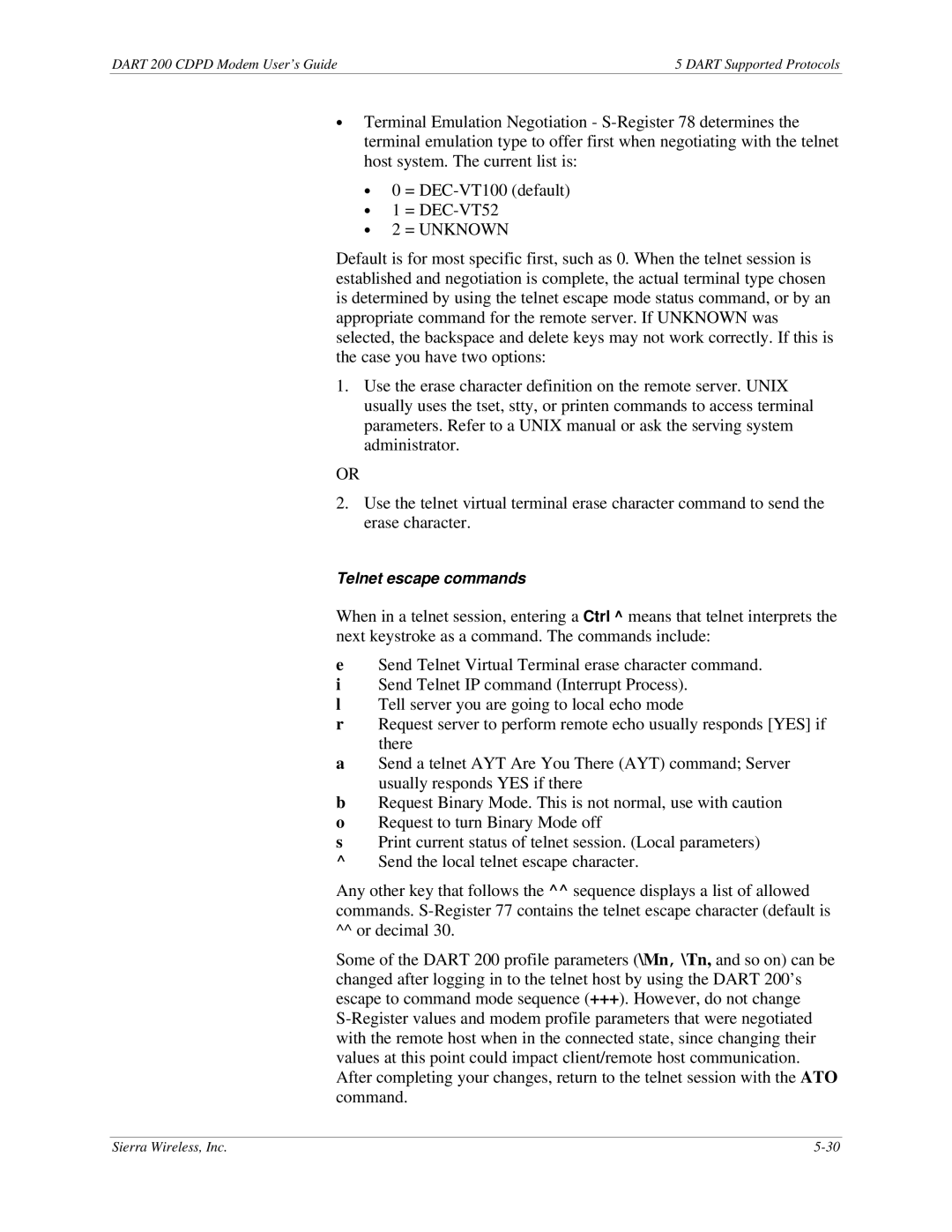DART 200 CDPD Modem User’s Guide | 5 DART Supported Protocols |
∙Terminal Emulation Negotiation -
∙0 =
∙1 =
∙2 = UNKNOWN
Default is for most specific first, such as 0. When the telnet session is established and negotiation is complete, the actual terminal type chosen is determined by using the telnet escape mode status command, or by an appropriate command for the remote server. If UNKNOWN was selected, the backspace and delete keys may not work correctly. If this is the case you have two options:
1.Use the erase character definition on the remote server. UNIX usually uses the tset, stty, or printen commands to access terminal parameters. Refer to a UNIX manual or ask the serving system administrator.
OR
2.Use the telnet virtual terminal erase character command to send the erase character.
Telnet escape commands
When in a telnet session, entering a Ctrl ^ means that telnet interprets the next keystroke as a command. The commands include:
eSend Telnet Virtual Terminal erase character command.
i Send Telnet IP command (Interrupt Process).
l Tell server you are going to local echo mode
r Request server to perform remote echo usually responds [YES] if there
a Send a telnet AYT Are You There (AYT) command; Server usually responds YES if there
b Request Binary Mode. This is not normal, use with caution
o Request to turn Binary Mode off
s Print current status of telnet session. (Local parameters)
^ Send the local telnet escape character.
Any other key that follows the ^^ sequence displays a list of allowed commands.
Some of the DART 200 profile parameters (\Mn, \Tn, and so on) can be changed after logging in to the telnet host by using the DART 200’s escape to command mode sequence (+++). However, do not change
Sierra Wireless, Inc. |
